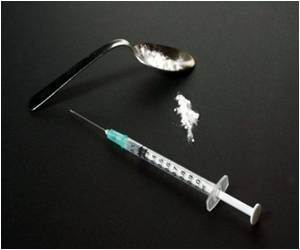At the University of Washington's Alcohol and Drug Abuse Institute, new data indicates increases in heroin availability, abuse and deaths across the state, particularly among young adults ages 18-29.

The largest increases were outside of metropolitan areas; the number of pieces of police evidence positive for heroin totaled 842 in 2007 and increased to 2,251in 2012 statewide."We are hearing about heroin as a major and increasing problem from law enforcement across Washington in 2012," reports Dave Rodriguez, director of the Northwest High Intensity Drug Trafficking Areas group, a coordinating center for federal and local law enforcement.In 2012, 64 percent of people entering publicly funded treatment for the first time were heroin users ranging in age from 18 to 29.
"Opiate addiction is a chronic disease that leads to increased hospitalizations and even death, so we want to provide a scope of interventions and treatment," said Chris Imhoff, director of the Washington State Division of Behavioral Health and Recovery in the Department of Social and Health Services.
"For those who become addicted, counseling, medication-assisted treatment and recovery support are proven to save lives and reduce future healthcare costs." Statewide, the rate of accidental deaths involving heroin and other unspecified opiates increased during the period between 2009 and 2011 compared to the previous decade. In King County, which has data through 2012, heroin- involved deaths increased substantially in 2012 due to increases in deaths among people under the age of 30. Between 1997 and 2012 in King County, almost three-quarters of drug- caused deaths involved heroin and/or a prescription-type opiate.
"All opiate overdoses are preventable and many can be reversed prior to becoming fatal if medical aid is sought, "said Dr. Daniel Lessler, the chief medical officer of Washington State's Health Care Authority. "Anyone at risk for having or anticipating an opiate overdose can be prescribed the antidote naloxone in Washington. It is intended for people at risk of an overdose whether they are taking opiate pain medicines or are dealing with opiate addictions."
"People need to be aware of the 911 Overdose Good Samaritan law that provides legal immunity from prosecution for drug possession charges to an overdose victim and anyone who seeks medical help during an overdose," said Caleb Banta-Green, author of the report and a researcher at the Alcohol and Drug Abuse Institute at the University of Washington. "We are continually increasing education and services to try to prevent fatal overdoses. The general public, as well as law enforcement and health care professionals, can learn more at http://www.stopoverdose.org."
Advertisement










